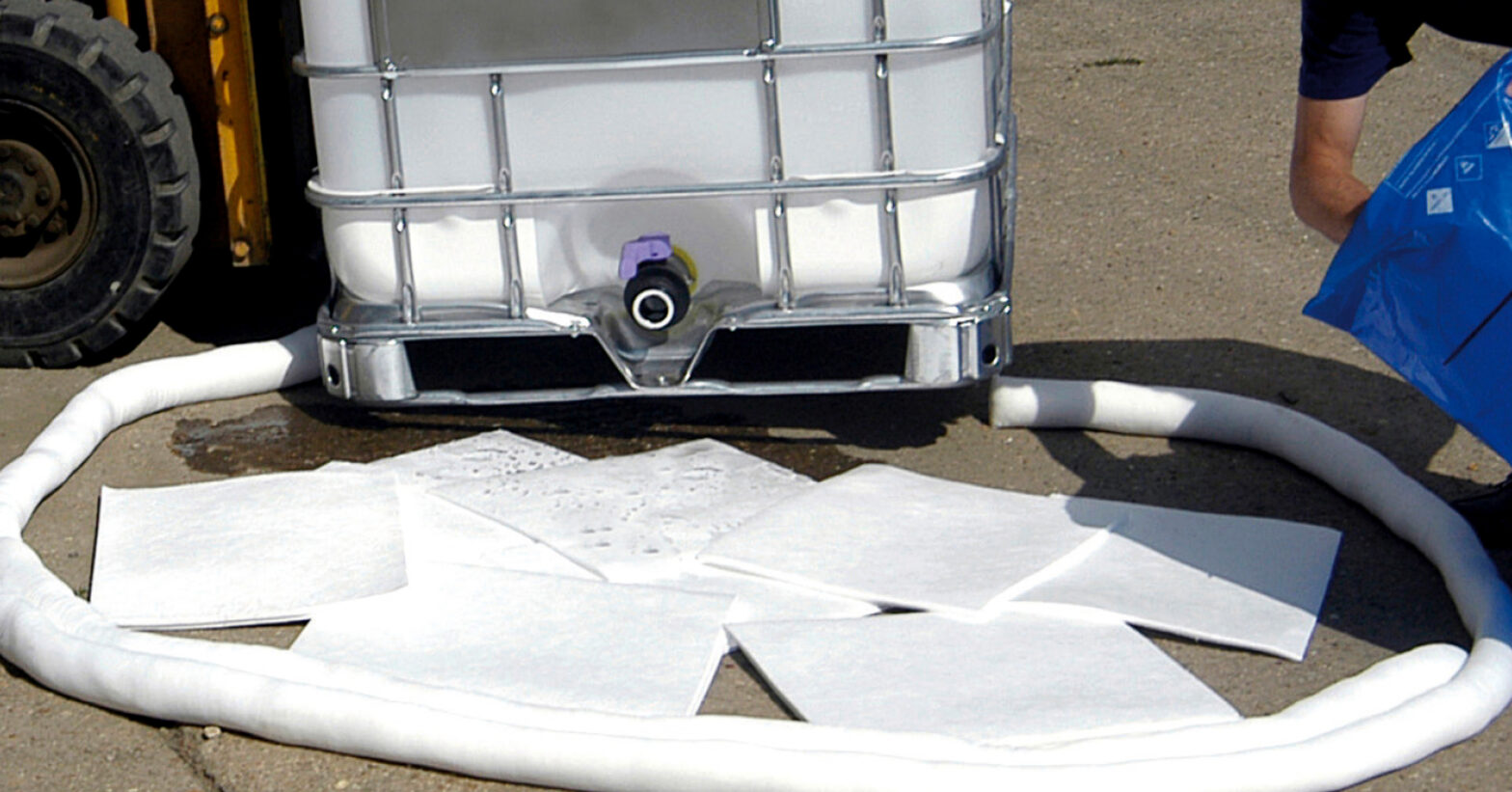
So what is a spill kit?
A spill kit, also known as a chemical spill kit or spill clean-up kit, is a vital tool for managing the clean-up, decontamination, and disposal of hazardous chemical spills in the workplace. These kits comprise of various materials and tools designed to facilitate the safe handling of spills.
According to the UK Health and Safety Executive (HSE), slips, trips, and falls continue to be significant contributors to workplace injuries, with spillages being a common cause. In 2023/24, slips, trips, and falls accounted for 27% of workplace injuries. These incidents often result in injuries ranging from minor to severe, including fractures, sprains, and concussions. Moreover, the average cost of a slip, trip, or fall accident in the workplace is estimated to be £9,500, according to recent data from HSE.
Types of spill kits
Various types of spill kits are available, each designed to handle specific types of spills. Common types include:
General purpose spill kits
These versatile kits can address a wide range of spills, including liquids such as blood, sewage, and other chemical products. However, customisation may be necessary based on the chemicals present in the workplace.
Chemical spill kits
These are specifically designed to manage spills of hazardous chemicals, including solvents, paints, acids, and pesticides.
Oil and fuel spill kits
These kits are tailored to handle spills of flammable liquids like oil and fuel, minimising the associated risks.
It’s important to note that, as part of your workplace’s Incident Management Plan, you must have spill kits on site that are compatible with the chemicals present and capable of addressing potential spill quantities.
Do you need a spill risk assessment?
Conducting a spill risk assessment is crucial to determine the appropriate spill kits for your workplace. Factors such as the types and quantities of chemicals on site, potential spill locations, and chemical safety data sheets should be considered. Failure to conduct a thorough risk assessment can result in non-compliance with regulations and significant penalties.
Immediate clean-up
In the event of a spill, immediate clean-up is essential to prevent harm to personnel, property damage, and environmental pollution. Failure to act promptly can result in legal repercussions and endanger both workers and the community.
Workplaces requiring spill kits
Any workplace handling hazardous chemicals must provide spill containment systems and response measures. Compliance with regulations ensures the safety of personnel and minimises the risk of accidents.
Placement and accessibility
Spill kits should be strategically located throughout the workplace and easily accessible in areas prone to spills. Proper signage and instructions should accompany each kit, and staff must receive adequate training on spill response procedures.
Understanding causes of spills
Understanding the causes of spills, such as human error, equipment failure, natural disasters, and deliberate acts, is crucial for implementing preventive measures and appropriate training programs.
Conclusion
In conclusion, spill kits are indispensable for managing hazardous chemical spills in the workplace. By selecting the correct kits, conducting risk assessments, and providing adequate training, businesses can mitigate risks and ensure a safe working environment.




![stronghold global logo[94]](https://www.strongholdglobal.com/wp-content/uploads/2022/03/Stronghold-Global-Logo94.png)




